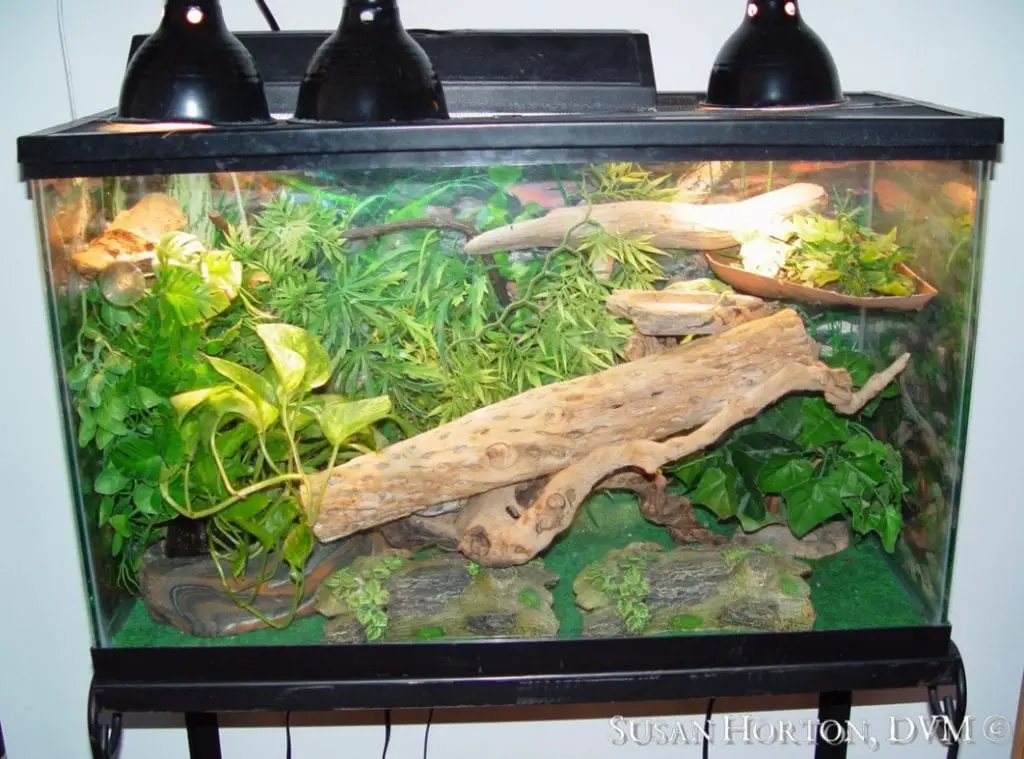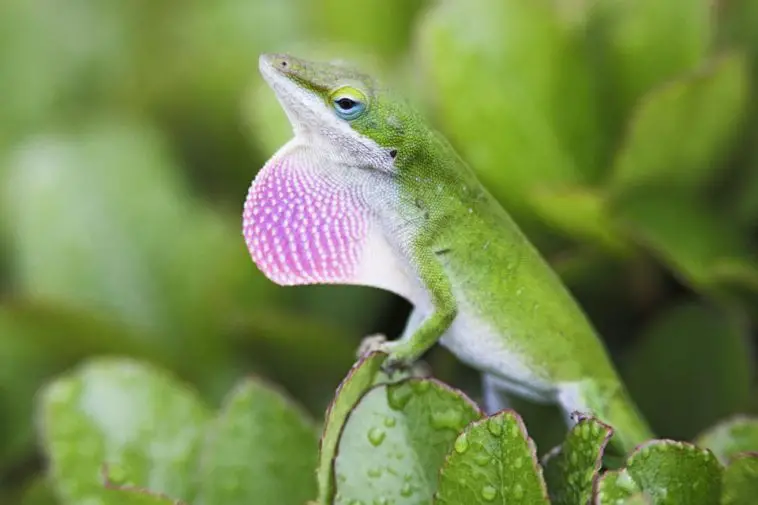In the exotic pet world, there are certain pets that tend to be favorites among owners due to how popular they are and how to fit they are for almost any kind of owner. In that sense, there is no wondering why there are some exotic reptiles that are easier to find in the market as breeders know for certain that they are higher in demand compared to other lizards.
When it comes to popularity, there are not a lot of pet reptiles that are as popular as the Anole Lizard. These lizards are some of the best choices for pets for a lot of different exotic pet owners and are great picks for those who are just trying to take care of their first exotic pets since they are considered beginner-level lizards.
So, if you want to try to take care of your first Anole Lizard, you do not have to feel like a beginner in the exotic pet world. Instead, we have gathered the information that can help you take care of your Anole Lizard like an expert.
Knowing more about the Anole Lizard
Overview
Anoles are a type reptile that is grouped in the genus Anolis and is most often found in many places across America. They are much more common in North America but can also be found in many places in South America. Anoles are tree-dwelling lizards that are otherwise called as arboreal. They would rather stay in elevated places than on land. They also prefer warmer climates than colder ones.
There are over 250 known species of Anole Lizards, which are all adept at climbing trees at rapid speeds. Some of the more popular species of Anole Lizards include the Green Anole, Knight Anole, Brown Anole, and Giant Anole. All of those Anole Lizards have their own unique traits and attributes that make them ideal pets for exotic pet owners. They are all easy to take care of and are great for beginners.
Appearance
Because there are a lot of species of Anoles that exist in the wild, they actually vary in terms of their appearance, but they do have a lot of morphological similarities. Anole Lizards tend to be somewhere between 5 to 16 inches in terms of length. The longest and largest of them are the Knight Anoles, which can be over 16 inches long. Meanwhile, the Green and the Brown Anoles are close to 5 to 8 inches long.
Most species of male Anole Lizards have large throats that are called dewlaps. These dewlaps are enlarged for whenever the males are signaling their territory or are trying to attract other female Anole Lizards of the same species. Females may also have dewlaps but are not as large as the ones seen in male Anole Lizards.
Anole Lizards vary in terms of their color. However, most species of Anole Lizards are predominantly green but with varying patterns. The Brown Anole may be the only one that departs from the common green color as these Anole Lizards tend to be brownish or dark yellow. It really depends on the type of Anole Lizard and from where they come from since they use their color to camouflage. Speaking of camouflage, Anole Lizards can also change their colors but are not as adept at that as chameleons are.
Eating Habits

Anole Lizards are very aggressive and voracious eaters that will almost always eat whatever is in front of them. Most of these reptiles are known to be carnivorous that will eat anything that fits in their mouth. While smaller Anole Lizards are insectivores because the only prey small enough to fit their mouths are insects, the larger ones may actually eat small rodents but are still more or fewer insectivores in the sense that they will most likely base their diet on insects and other invertebrates. And since they are aggressive hunters in the wild, Anole Lizards love to east insects that are moving and will most likely avoid those that are already dead.
Behavior and Temperament
In terms of their overall habit, Anole Lizards are always arboreal and will only stay on elevated places rather than on land. They are adept at climbing trees and are good at scaling even smooth surfaces. That is why you will always see them on top of something elevated. They can even climb at speeds you won’t expect them to as they are used to an arboreal kind of lifestyle.
When they are looking for places to stay on, Anole Lizards prefer surfaces that allow them to blend in. For example, Brown Anoles prefer tree branches because of how it fits their overall color, while Green Anoles prefer to stay on things that are green. In any case, Anole Lizards are known for blending in with their surroundings and can even change colors to try to hide from predators since they can also be quite shy in the wild as there are plenty of larger predators that can easily prey on them.
Male Anoles can be quite territorial and aggressive against other males, although they are generally calm lizards. When they sense another male encroaching on their territory, they will not hesitate to try to intimidate them by inflating their dewlaps or by actually attacking the other male.
In the wild, one of the other survival tricks that Anole Lizards do when they are threatened or attacked by a predator is to drop their tails at will. The purpose is to use their tails as a diversion so that they can escape the predator. Anole Lizards, like many other species of lizards, can grow their tails back, but they will most likely end up not looking like the original.
Anole Lizards tend to be quite shy and skittish, especially when they are wild-caught. Captive-bred ones are less likely to be shy but can still feel threatened if you approach them aggressively. Other than that, they are generally docile towards humans and are not as aggressive as other species of lizards are.
Caring for the Anole Lizard
Habitat

Anole Lizards should be housed in an enclosure that is more vertical than horizontal because of their arboreal nature. The size of the enclosure depends on the overall size of the Anole Lizard you have and the number you are willing to house in one single habitat. A 10-gallon container might be enough for one but, if you are going for multiple Anoles, you would need something bigger. Ideally, the height should be about 18 inches.
You need to decorate the enclosure with different plants and other types of structures to provide places for your Anole Lizard to climb on to. You may want to put in large plants that have branches big and strong enough for the reptile. You can even put in a tree-like structure or even some faux branches to give the Anole Lizard a more natural feel in its environment. Hiding spots are also ideal for whenever the reptile is on the ground. Rocks and trunks can be ideal spots for them to hide under.
Substrate
The substrate is not something that is too important because the Anole Lizard tends to stay in elevated places. However, the purpose of the substrate is to improve the humidity levels as there are certain types that are great at retaining moisture. In this case, you may want to use cypress mulch as your substrate, but you can also go for other types of substrates.
Heat and lighting
Anole Lizards prefer to stay in warm environments. Try to provide them with enough heat with temperatures around 85 to 90 degrees Fahrenheit at the top and somewhere between 75 to 85 degrees near the bottom. At night, the temperatures can safely drop to about 65 degrees but not lower. The best way to heat the enclosure while also providing light is to use a heat bulb. You can also provide the lizard with a UVB lamp to improve its overall health.
Humidity
When it comes to its habitat, Anole Lizards require a lot of humidity. Try to house this reptile in an enclosure with humidity levels of around 60 to 80 percent. The best way to improve humidity is to keep the enclosure damp by misting it. The substrate should be damp but not flooded. As much as possible, make sure that the substrate does not dry out. Misting the enclosure with water on a regular basis makes it possible for it to stay humid throughout the day.
Feeding and water
Since the Anole Lizard is an insectivore, you can safely feed it with different types of insects such as crickets, mealworms, and waxworms. They will almost always eat any type of insect you feed them so long as they are small enough for the reptile. These voracious eaters prefer to eat live prey and will not eat insects that are dead or not moving. Larger Anoles such as the Knight Anole may be able to eat small mice or pinky mice, but make sure to feed live mice to them since they do not like eating dead prey.
When feeding your Anole Lizard, make sure to gut-feed the insects a night before giving them to your reptile so that they will provide more nutrients when eaten. You should also dust them with a calcium supplement to improve your Anole Lizard’s overall health and to avoid the dreaded metabolic bone disease that is caused by low calcium.
Anole Lizards do not drink from a standing water source and prefer to get their water by drinking from drops. In that case, make sure to mist the enclosure on a regular basis so that there will always be water falling on the leaves of the plants you placed in your reptile’s enclosure.
Handling your Anole Lizard
Anole Lizards are not really the worst reptiles to handle because they are usually docile when handled by humans. However, this is mostly true for captive-bred Anoles but not always true for those that were caught in the wild. So, as much as possible, get yourself a captive-bred Anole Lizard because they are less shy and less skittish compared to their wild-caught counterparts. One other thing to consider when handling an Anole Lizard is to make sure you never handle them from their tails. When they are threatened, these lizards will discard their tails. While they may be able to grow them back, the regrown tail will not look like the original. In that case, avoid handling them from their tail.



